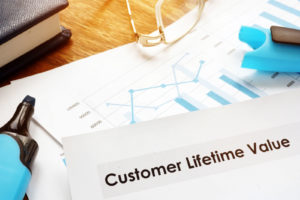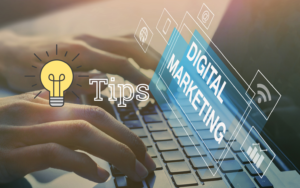There’s no denying the thrill of making a sale. But what happens afterward?
For many businesses, the endpoint is when a customer makes a purchase and the product is sent out or a service is delivered. Sadly, this is why they miss out on turning that customer into somebody who would return to buy from them again. They neglect to have anything in place that encourages customers to remember them or to gain extra value, and as a result, that one sale stays as a singular event.
An equally important step in the customer journey is loyalty. Businesses need to offer value and excellent customer service to the people who are kind enough to shop with them. People who feel cared for are likelier to return to a business.
Let’s look at eight ways to turn someone into a repeat customer.
Key Takeaways
Here are some pointers to help you get started.
Why Target Repeat Customers?
- According to the Pareto Principle, a small percentage of your clients will provide most of your revenue. You can attribute 80% of your sales to only 20% of your clients, who are those repeat buyers.
- The Boston Consulting Group found that for every new client acquired, the cost to advertise to an existing customer is just $7. The average marketing expenditure per new client is $34. According to some estimates, it might cost up to thirty times as much to attract a new client as it does to keep an old one.
- According to research by Cross-Channel Marketing, 82% of businesses feel that customer retention is more cost-effective than customer acquisition.
- Three to ten times more likely to purchase from an existing consumer as a cold lead (MarTech).
- Customer retention is increased by 50%, and average order value is increased by 33% among existing customers compared to new customers.
What is the customer journey?
Also known as the sales funnel or sales journey, it is the path customers walk from knowing nothing about your business to becoming loyal customers who just can’t stop telling other people about how fantastic your business is.
The steps on the customer journey are awareness, consideration, conversion, loyalty, and advocacy.
Loyalty is the step on the customer journey that you need to nourish to have repeat customers. Advocacy is when your customers begin to share about your business with others because they like it so much.
Another way to look at it is called lifecycle marketing. A customer’s lifecycle consists of the several points at which they have contact with your business and its offerings. It shows their entire customer journey, from initial interest to lifelong loyalty and advocacy. Customers that have been with you for a while are invaluable since they spend more money and spread the word about your company.
Lifecycle marketing involves tailoring interactions with prospects, leads, and customers to their specific stages in the purchase process. The lifecycle steps are awareness, engagement, participation, assessment, purchase, and loyalty. When customers reach loyalty status, they are so delighted with your product that they enthusiastically promote it to their network. You need to develop their advocacy to maintain them as customers and attract new ones.
Eight Ways To Earn Repeat Customers
1: Post-purchase email sequence
Set up an email sequence using automation to reach out to your customers after they’ve purchased from you. You can use more than one sequence, so the content is tailored to the type of product the customer purchased from you. Check in with your customer, and make sure they can use and enjoy their purchase. Don’t forget to ask for feedback and a review.
One ‘gimme’ for post-purchase emails is the order confirmation email, which customers have come to expect. It validates that they made the purchase and paid correctly and that the things they bought match what they expected. Order confirmation emails have a 60% open rate, showing consumers are eager to access and evaluate the material.
Sending thank-you letters is a great way to humanize your company and deliver a great post-purchase experience, and saying “thank you” goes a long way toward developing a relationship with your consumers. The thank you message is simple—just thank the consumer for making a purchase and include a call to action (CTA).
2: Build relationships
Use ongoing email marketing communication to build customer relationships. Share the latest news from your business. Send them valuable tips and ideas that can help them. From time to time, you can include a special offer or incentive to encourage their next purchase.
Eighty-nine percent of American consumers between the ages of 18 and 65, as reported in a 2017 study commissioned by Wunderman, a leading global digital agency, and conducted in collaboration with Penn Schoen Berland, believe brands must actively demonstrate “they understand and care about me.”
So how do you show you care about your customers? Successful client connections are built by doing the following:
- Always use a kind welcome, but tailor it to the person you’re talking to and the circumstances.
- Give the impression to your consumers that you have read their minds.
- Remember, some clients will care more about how you interact with them than the quality of your services or goods.
- Maintain communication with your clientele by informing them about services and products they could find helpful while doing business with you.
3: Loyalty program
Another way to practically ensure repeat customers is to set up a loyalty program where customers are encouraged to purchase more from you to receive rewards. Many businesses can use these effectively, from coffee and sandwich shops to gas stations.
Not only does this encourage customers to return, but it can also be an excellent incentive for new customers. Knowing they can, for example, earn cents off their gas purchases by shopping at a particular grocery store will entice them to keep coming back.
4: Focus on customer experience
The best decision is to ensure customer experience when purchasing from your business. First, if someone has a bad customer service experience, they will likely remember their poor treatment and share it with their network.
If someone has a great experience, not only will they tell others about your business, but they’ll also be motivated to return in the future. Excellent customer service can make you stand out from all of your competitors.
5: Listen to feedback
One of the most important things you can do as a business owner is listening to your customer’s feedback. Taking the time to listen to someone and allowing them to feel heard can make a big difference in their relationship with you. Your customers may share good ideas you can implement in your business to deliver a better product or service.
You can work this into email marketing in several ways. You can make your customer feel valued by seeking their opinion in surveys or product reviews. They will feel like you care about them if you ask about their purchasing experience and how you can improve it.
6: Give Occasional Free Gifts
This isn’t necessary, but it can be a ‘nice to have’ with the right idea. You may have the opportunity to give a free gift to your customers that is meaningful and valuable to them. Your free gift doesn’t have to be expensive, just something your customers will value and find helpful.
If you have a retail store, you could send holiday baskets with exclusive items to your most valuable customers or investors. Lean into the “surprise and delight” marketing concept by offering a free goodie or personalized assistance.
One great, yet bittersweet, example of this kind of marketing is the online pet supply brand, Chewy. The brand went viral on Twitter for its thoughtful handling of customer service when a customer’s pet died. The customer, Anna, contacted Chewy after her dog, Gus, died to see if she could return a bag of dog food. In response, Chewy gave her a full refund, instructed her to donate the food to an animal shelter, and sent flowers with a card signed by the customer service representative she talked to.
So not only will Anna always remember this sensitive response to the death of her beloved pet, but sharing the experience with her network eventually led to her tweet being liked and shared hundreds of thousands of times.
7: Offer Customized Promotions
While newsletters are traditionally a “one-to-many” marketing strategy, advances in email software have made it possible to increase the level of customization (e.g., separate newsletters for men and women).
However, providing clients with personalized information and offers based on their profile, purchases, and interests is the Holy Grail of digital marketing. A recent survey found that 78 percent of customers want discounts and deals tailored to them.
Customers are far more likely to be interested in and ultimately make a purchase in response to personalized offers.
Any of your preferred communication channels, including email, text message, your mobile app (if you have one), or your website, may be used to disseminate these discounts to your target audience (in the form of a pop-up, for example).
Delivery incentives (such as free delivery), promotional coupons, and a feeling of urgency are all ways to boost the success of your campaign (limited-time offers).
8: Adopt an Omni-Channel Marketing Approach
Email is the primary means of contact and advertising for many businesses nowadays. While it can be successful, there are plenty of alternative options.
To maximize the efficacy and impact of your communications, it is preferable to use many channels at once. Social media, push notifications, website chat options, and web browser notifications are some of the many options businesses have for increasing their points of contact with customers.
This approach will facilitate communication with your clientele and entice repeat business.
Delivery incentives (such as free delivery), promotional coupons, and a feeling of urgency are all ways to boost the success of your campaign.
To Sum Up
Targeting repeat customers is crucial because it’s more cost-effective than targeting new leads, and your customers expect to be cared for. There are various ways to make your clients feel like you care about their experience and feelings, and the above options are a great start.
If you’re interested in learning more ways to engage with your customers, please contact us for a free consultation.










